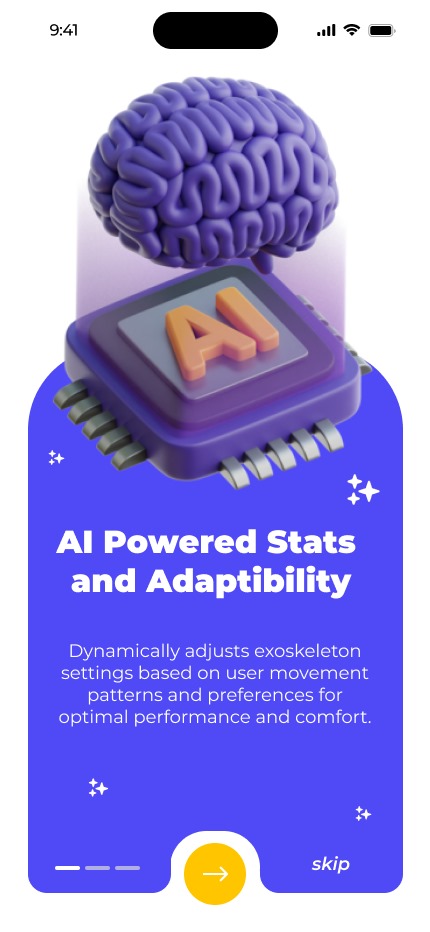"Motor disabilities, including paralysis, Parkinson's, and trauma-induced limb loss, afflict millions worldwide, impeding independence and quality of life. Veterans, comprising over 4 million with service-related disabilities, face disproportionate challenges, underscoring the urgent need for innovative solutions.“
Our project leverages AI, mechanical actuators, and wearable prosthetics to emulate natural human locomotion, addressing motor disabilities such as paralysis and limb loss. By seamlessly integrating this advanced technology, we aim to empower individuals to regain independence and mobility, revolutionizing assistive technologies.“
Custom Body Part Exoskeletons: Tailored exoskeleton designs for specific body parts, reducing production costs and ensuring optimal fit and functionality for users' individual needs.
User-Friendly Mobile Application: An intuitive and easily accessible mobile app interface, enabling users to control and customize their exoskeletons effortlessly, fostering independence and convenience.
Personalized Model Development: Creation of personalized exoskeleton models based on user-specific requirements, including factors such as medical condition, mobility level, and lifestyle preferences, to maximize effectiveness and user satisfaction.
Minimalist and Human-Centric Hardware: Designing hardware components with a minimalist and humanized approach, focusing on aesthetics and comfort to promote social inclusion and reduce stigma associated with assistive devices.
Object Detection using YOLO: Utilizing YOLO (You Only Look Once) algorithm for real-time object detection, enabling the exoskeleton to identify and track objects in the user's environment with high accuracy and efficiency.
Object Selection and Eye Tracking with OpenCV: Implementing OpenCV (Open Source Computer Vision Library) for object selection and eye tracking, allowing users to intuitively interact with the exoskeleton by simply looking at the desired objects or locations.
Task Selection and Actuator Control with Arduino and ESP: Integrating Arduino and ESP (Espressif Systems' Peripheral) microcontrollers to process user commands and select appropriate tasks based on the detected objects or eye tracking inputs. This ensures seamless communication between the user interface and the exoskeleton actuators.
Individual Finger Actuators and High-Torque Motors: Incorporating individual finger actuators and high-torque motors into the exoskeleton design to enable precise and dexterous hand movements, enhancing user interaction and functionality for tasks requiring fine motor control.

